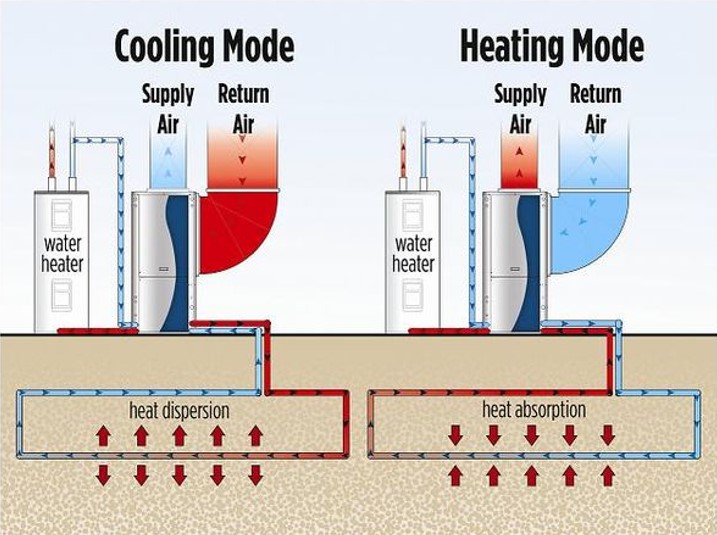- Definition and Types of Energy
- Myths And Misconceptions About Energy
- The Relationship Between Energy and Environment
- Climate Change and Carbon Footprint
- Greenhouse Gas Effect
- The Role of Human-Induced Greenhouse Gases and Energy Consumption
- Energy Efficiency and Sustainability
- Renewable Energy Sources and Future Perspectives
- Play and Learn
- Solar Energy Conversions
- Solar Energy Worldwide
- Solar Energy in Partner Countries
- Positive and Negative Impacts
- Technologies for Harnessing Solar Energy
- Solar thermal energy technologies and applications
- Electricity Generation Methods
- Passive Heating and Cooling of Residences with the Sun
- Concentrator solar power (CSP) systems and electricity generation
- Systems and Applications That Generate Electricity directly from solar rays
- Photovoltaic Cells and Panels
- Domestic PV Systems
- Off-Grid PV Systems
- Hybrid Connected Systems
- Materials Used in PV Cells
- Play and Learn
Ground and Water Source Heat Pump
Geothermal heat pumps are based on the principle that the temperature in the lower layers of the earth's crust is relatively constant throughout the year. In these systems, low-temperature geothermal fluid is used as a heat carrier or, in areas with little groundwater, the heat of rocks is utilized. For ground and water source heat pumps, wells are generally drilled at a depth of 100-200 meters. These systems are used for various purposes such as hot water supply, space heating and cooling. They are especially preferred for energy saving in residences, commercial buildings and industrial facilities.
